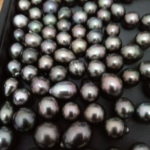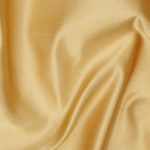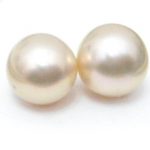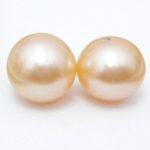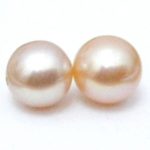Pearl opening companies seem to be popping up all around the world, certainly in the UK and on facebook in the last couple of weeks or so.
This pearl opening thing has been around for years. Every so often someone will come up to one of us and say they got this pearl at some place which had a tank of oysters and they picked one and it had a pearl in it. In one place in America I heard of boys diving off a pier to get the shells, which is a dramatic bit of scene setting.
They cause our hearts to sink. The pearls are invariably low quality freshwater pearls, but the customer will have been told that the pearl is worth £££ and is rare and very valuable. I never know whether to be honest and blow the smoke away or just gush about what a wonderful pearl etc etc

You can have the poor oyster in a tin – $1 a time.
These set ups are always a money making scam to some degree or other. I have yet to see one which sells genuine akoya pearls of any value. Mostly they sell low quality freshwater pearls in plated findings for – I just saw one on facebook – £35 which is outrageous

You can have them in a box, with a silver tone finding for $1.30 (min order 100)
The scam goes like this. The operator buys pickled oyster shells from either a wholesaler in the UK or America or direct from china. They are vacuum packed and dead. The poor things have had a random freshwater pearl shoved into them. The process is that the pearl is inserted into a live young akoya oyster shell which opens as it dies. The corpse is then dumped into a chemical bath which shrinks the adductor muscle so it slowly closes, and preserves it. Then it is vacuum packed or tinned and sold to one of the companies at the top of the supply pyramid.
There is one company which has been recruiting sellers hard and promoting these parties, because they are selling the preserved shells and findings at a huge mark up and controlling the drilling and setting of the pearls. Big profit for them.
The party works by someone signing up to buy some of these tinned oysters and associated stuff and told a load of nonsense about what they are. They organised a website and facebook page and get people to join an online video ‘party’ where with a lot of whooping and hysteria, the huckster then opens one of these in front of a webcam and – wow – you have this pearl. The huckster will give a ridiculous appraisal that the pearl is worth much money. (no it is not)
Or the opening is done in the shop or the end of the pier. But the pearl inside is yours. And, not only do you have this pearl now, but you can buy the finding -some basket pendant holder usually – to display it. And it only costs £££.
I tracked down one UK wholesaler. These pickled and vacuum packed shells cost between $1 and $2 a pop. Never more, even when packed individually in a box with a silver tone finish pendant finding. That wholesaler is selling them for £80 for five! I am in the wrong business.
The operator opens the pearl and tells you your pearl is worth £££.
It is not.

Vacuum packed, so you can opening them in front of a webcam- popular on facebook. $1.20 each
There are also suspicions that there is some pyramid selling going on, and I heard over the weekend of two people in America who have thought they would start up these horrible operations and have lost their money by being sent empty boxes
I’ve not yet seen a website with one of these companies which complies with UK and EU law on returns or on contact details . These are invariably low quality freshwater pearls – akoya pearls do not come in shocking pink or peach, and certainly not ready dyed black! Plus the chemical liquid in which they are preserved is probably toxic.
If I sound cross about this nonsense and scam it is because I am. It is dishonest and wrong

Just another example. These were the cheapest – 85cents US each
If you want great pearls talk to us – We go to Hong Kong to personally select every single pearl on the website. Our business is open, pays its taxes, is a ltd company with bona fides, complies with all the UK law, you have an address for me, you can talk to us, make returns, and we’ve been going for more than 15 years.
Shop here for finished jewellery
Shop here for bespoke commission work
Shop here for loose pearls to make into jewellery
Update
Information for a class action is being gathered in the USA. If you have had involvement with this nonsense either as a buyer or seller in the US please contact https://www.classaction.org/vantel-pearls-lawsuits who will be taking action in the ninth circuit.
In the UK contact Trading Standards and the Citizens’ Advice Bureau
Latest
There’s a new video on youtube debunking the claims by sellers of these pearls that pearls change colour when wet/dry .They don’t. The sellers are lying, they are sending out different pearls to you. More scam, more deceit. Pearls do not change colour when wet.
There is no such organisation as The National Pearl Association of the United States. In America you have the Cultured Pearl Association of America. In the UK we Have the British Pearl Association. The NPAUS is a made up thing to try to add credibility to a pearl opening wholesaler company’s totally ridiculous and fraudulent pearl value chart.
This chart, being shown to pearl opening punters, assigns values to pearls. The values are absurd, not going to happen. No respectable pearl dealer would have anything to do with such a chart. Every pearl has a different value. arrived at by negotiation and with experience. If you are shown such a chart it is okay to laugh. Tell the person showing you that we said it was okay to laugh cos the chart is a joke with no basis in an honest pearl business
Finally…We’ve looked at some of the websites supplying pearl parties. They hide. They want your money but they do not give a mail address, just email. Ask yourself – does any reputable business hide where they are? Of course not.
November 2017 update
Remarkably I am still getting emails and enquiries about this. People still starting up businesses ( not spotting that their next big thing is the week before last’s fading craze).
There’s also been a revelation that the preservative liquid is definitely toxic in at least some shells – it is formaldehyde. Used to preserve tissue . UK safety people are investigating and import may well be banned
Finally for this update I got this email this morning from a pearl opening supplier. These are the prices your pearl opening facebook lovely friend is paying for these shells – work out their profits for yourself then browse our website for genuine top quality pearls at great prices…pearls selected carefully and in person by us.
https://www.pearlescence.co.uk/index.php

work out for yourself that you are being played for a mug by the pearl openers
